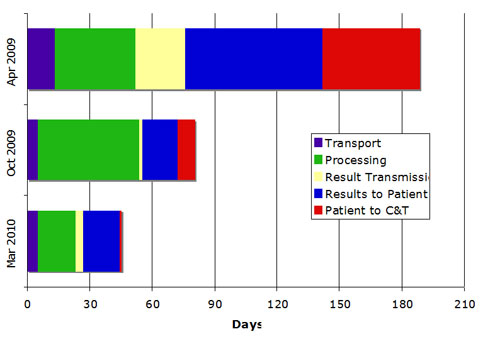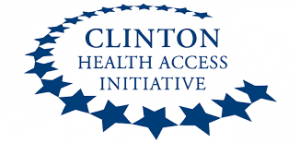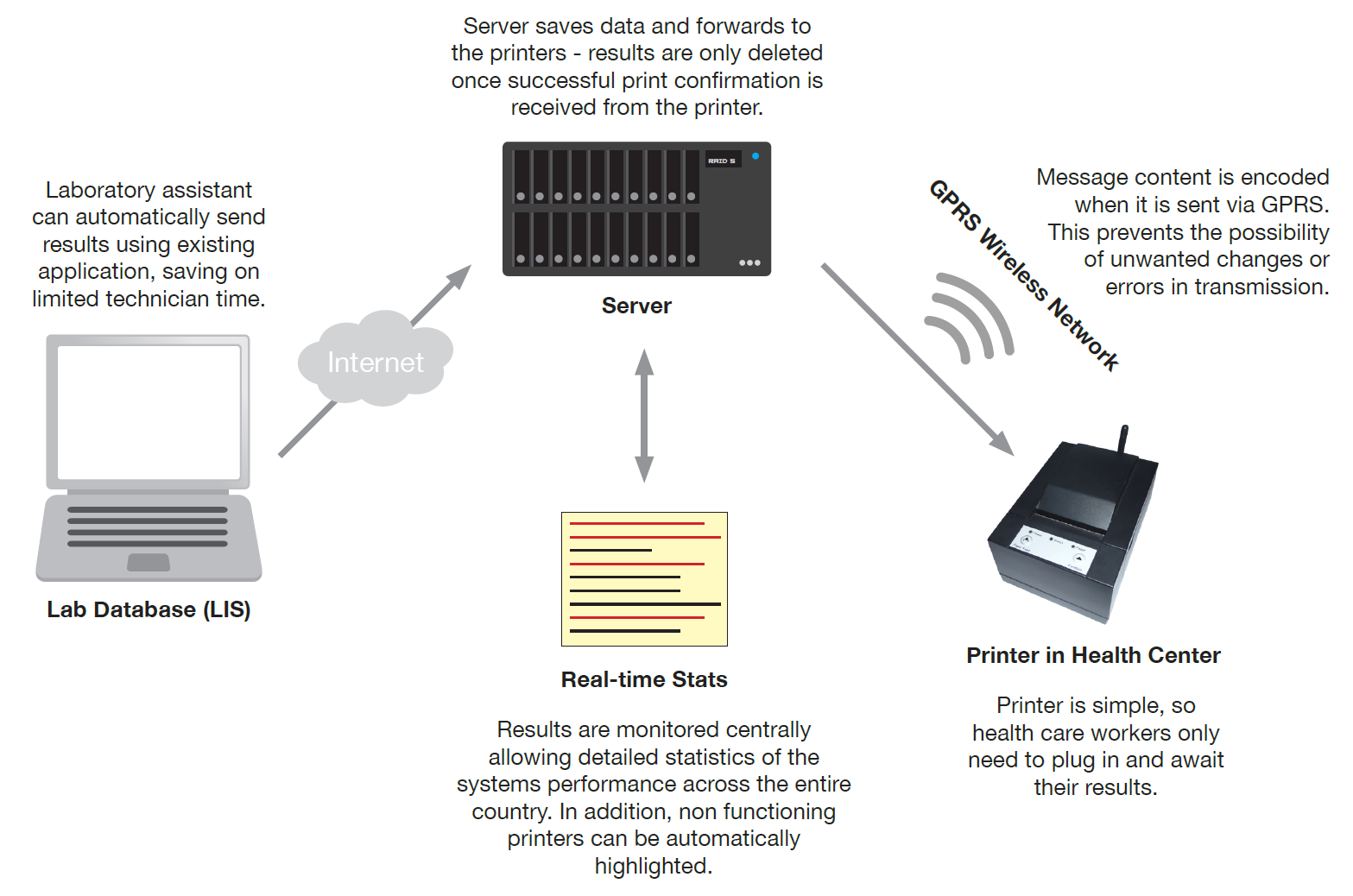Read the full case study detailing the ERS system developed by CHAI using the Siretta IoT printing solution. This document details the distribution of services throughout Mozambique and shows the improvements in performance once the solution had been implemented in country.
HIV Early Infant Diagnosis
This article describes the use of the SMS printer as part of the Expedited Results System (ERS) which greatly improves the quality of Mozambique early infant diagnosis program. SMS Printer is a small, portable, standalone device for receiving and printing messages sent to it. The unit works with most network providers and can be supplied in many different configurations.
The ERS system allows monitoring of the following:
- HIV transmission rates increase and decrease
- Regional hotspots and trends
- Allocation of country wide resources
- Performance of diagnosis to treatment
- Infant mortality rate
Resource Allocation
In Mozambique, limited sample referral logistics, laboratory capacity and reduced numbers of skilled health care workers has led to long turn around times for critical Early Infant Diagnosis (EID) results, significantly delaying treatment initiation, and ultimately contributing unnecessarily to child mortality.
An innovative system was designed to allow laboratories to send test results directly to almost 300 health centres across the country. The Expedited Results System (ERS), which utilizes GPRS wireless technology and simple, inexpensive SMS Printers, vastly reduces the time and cost of transporting results from the laboratory to clinics. It is managed centrally by an administrative assistant, reducing the workload of skilled laboratory technicians. Confidentiality and the delivery of results are guaranteed through automated monitoring and evaluation software.
Preliminary results from the first phase of implementation in the urban setting of greater Maputo City showed a decrease in the average return time of completed EID results to patients from 85 to 33 days when using the ERS. The cost of transmitting each result using the SMS Printer that integrates GPRS technology is insignificant, even at high volume. As the evaluated health centres lie within a 20km radius of the reference laboratory and have relatively good logistics support, it is expected that the effect of the ERS will be even more dramatic for less resourced and more distant health centres.
The ERS was designed, piloted, and rolled out on a national basis in Mozambique in less than 10 months as the result of collaboration between government, partners, and the private sector. While initially created to accelerate EID results, other tests such as CD4 and tuberculosis are currently being integrated. This approach, now developed and tested, can be easily and rapidly transferred to other countries. A complete description of the system, including costs and procedures to implement will be shared.
The SMS printer allows you to send custom messages directly to the printer via a text message or website / web form. This has the advantage of using SMS or a GPRS connection to send the data to the printer, this results in a lower cost for each transaction and for custom fields to be sent to the printer.
Impact of the ERS on the EID cascade
A review of 4 health centres evaluated the effects of the ERS on the entire EID process. The use of the ERS in Oct 2009 coupled with faster sample processing in Mar 2009 not only improved result delivery to sites but also to patients who more rapidly enrolled in ART.

Who are CHAI?

The Clinton HIV/AIDS Initiative is an initiative of the Clinton Foundation which became a separate nonprofit organization called the Clinton Health Access Initiative (CHAI). Organizations such as the Clinton Foundation continue to supply anti-malarial drugs to Africa and other affected areas and according to director Inder Singh, in 2011 more than 12 million individuals will be supplied with subsidized anti-malarial drugs.
In May 2007, CHAI and UNITAID announced agreements that help middle-income and low-income countries save money on second-line drugs. The partnership also reduced the price of a once-daily first-line treatment to less than $1 per day.
The complete solution from Siretta:
Innovative Expedited Results System (ERS) greatly improves quality of Mozambique Early Infant Diagnosis program Issues In Mozambique, limited sample referral logistics, insufficient laboratory capacity and minimal numbers of skilled health care workers led to undesirably long turn around times for critical Early Infant Diagnosis (EID) results, significantly delaying treatment initiation, and ultimately contributing to child mortality.
From 2007 to 2009, Mozambique saw a rapid expansion of the National EID program to include over 235 health centres across the country. However, transportation of samples and results between remote districts and two central laboratories often takes many weeks. To accelerate the return of results, an innovative system was designed to allow laboratories to print test results directly in any health centre with network coverage.
The Expedited Results System (ERS) utilizes GPRS technology and simple, inexpensive printers to vastly reduce the time and cost of transporting results from the laboratory to clinics. It is managed centrally by an administrative assistant, reducing the workload of skilled laboratory technicians. Confidentiality and the delivery of results are guaranteed through automated monitoring and evaluation software.

Lessons Learned and Summary
Pilot implementation of the ERS in greater Maputo city showed 100% successful transmission and
printing of results, validating the system and monitoring software. The impact on the return time of ready results to health centres, measured by comparing a group of test and control sites, was dramatic: a reduction from average 17-22 days to 1-3 days.
After ERS implementation in Oct 2009 and with improved sample processing times between Oct 2009 and Mar 2010, secondary downstream effects included reducing the time in which patients received EID results and enrolled in ART from over 6 months to less than 2 months and an increasing the percentage of infants enrolling in ART by over 60%.

Siretta offer cross-industry and platform agnostic connectivity solutions for the Internet of Things (IoT). Check out our customisable wireless range of solutions to find out what we can do to connect your application.
